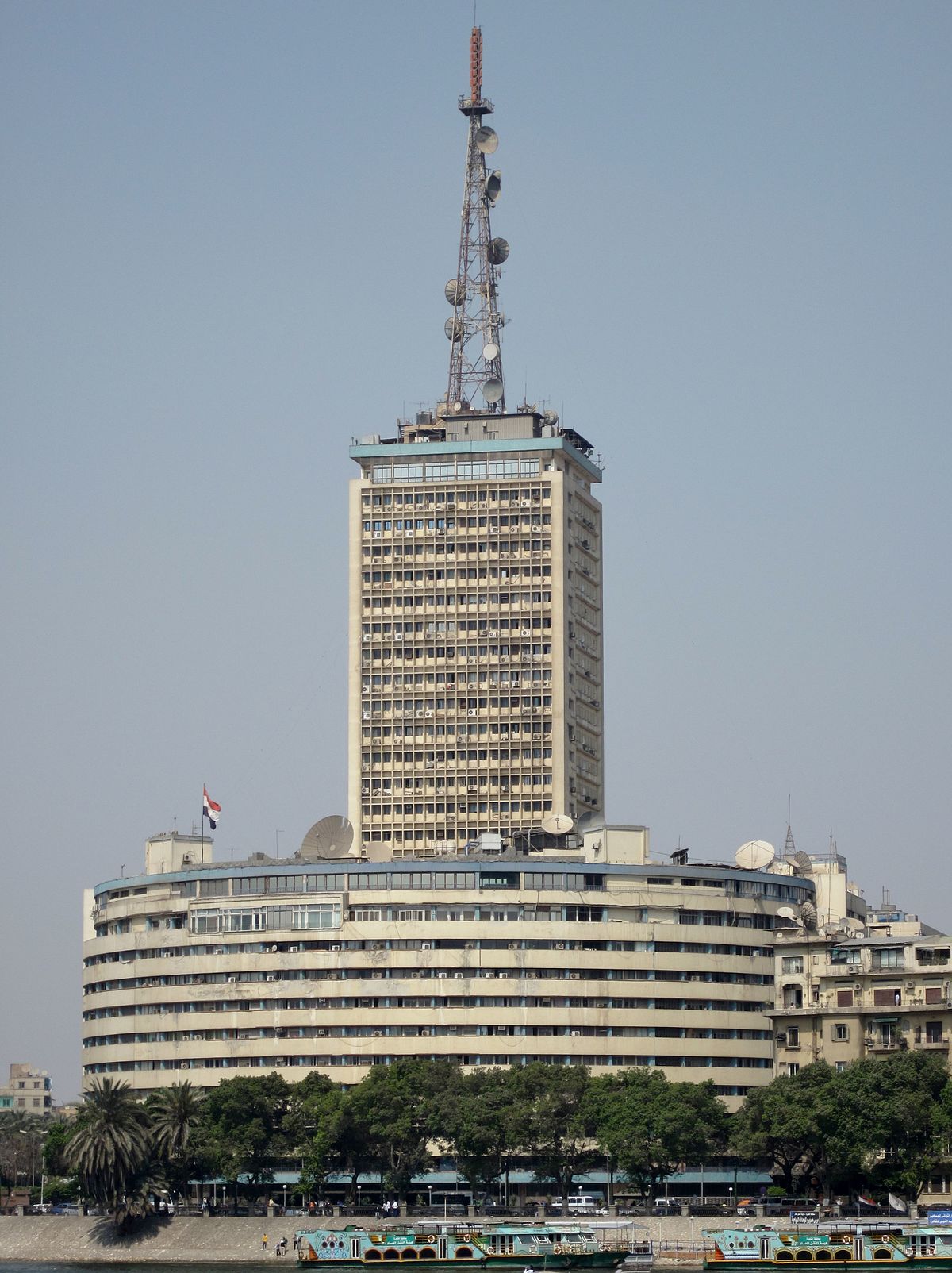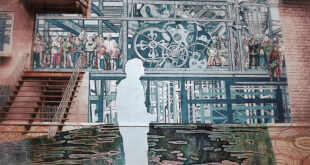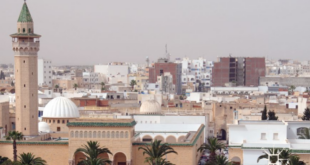Issue 20, winter 2015
https://doi.org/10.70090/GES15EMS
Throughout history, Egypt has often been viewed as the Arab region’s leader in media, politics, and culture. With a large film and entertainment industry, it has been referred to as the Hollywood of the East. As the most populous and one of the most politically influential countries in the Arab world, Egypt has also led the region in the development of a relatively open print and broadcast media. According to Amin (2002) Egypt’s print and broadcast media have attracted large audiences, disseminating Egyptian culture, dialect and political messages throughout the region.
Egypt has a wide range of government-run and private media. The Egyptian Radio and Television Union (ERTU), which is part of the Ministry of Information, supervise broadcast media. There are three national TV channels as well as six local channels. Channel Two, which is a national channel, broadcasts mainly in English and French. There are also numerous private satellite TV channels.
To understand why Egyptian media is structured the way it is, we must look at the nature of the relationship between the government and media, and examine the underlying differences between state and privately-owned media. It is important to situate this complex relationship, and Egypt’s transformative media landscape, within a broader historical context.
The Evolution of Egypt’s Media Landscape
Historically, the media environment in Egypt has been dominated by the state in all sectors, including print, broadcasting and news agencies. The era of President Gamal Abdel Nasser in particular was characterized by autocratic leadership, as he exercised an iron fist policy in dealing with his opponents. His policies led to a significant reduction in the margin of freedom enjoyed by various media, as he deliberately controlled mass media to mobilize people behind the government’s policies and ideologies (Boyd, 1977, 1999). Most critically, “Nasser’s nationalization of the press marked the end of its freedom, professionalism, and excellence.” (Nasser, 1990, p. 4) The press declined after 1960 when Nasser prevented the publication of any private papers.
When Anwar Sadat came to power in 1970 after Nasser’s death, he legitimized the creation of political parties and allowed them to publish their own newspapers. Although Sadat reduced some of the restrictions imposed on the media by his predecessor, the damage done to the Egyptian media sector during Nasser has left an enduring mark.
Under Sadat, “the press system changed several times, both toward and away from more diversity and freedom of expression. Sadat’s attitude toward the press, and toward freedom of speech generally was . . . ambivalent” (Rugh, 2004, p. 152). Sadat was torn between his desire to increase democracy and his fear of its exploitation. As a result, many of his political opponents were jailed, and the publications to which they contributed were shut down shortly before his assassination.
This ambivalent official attitude toward the media continued under President Hosni Mubarak, who assumed power after Sadat's assassination in 1981. Although Mubarak initially encouraged opposition parties to publish their own newspapers, the absence of true democratic practice and political participation left these parties and their papers without a real base of popular support. Additionally, the high illiteracy rate in Egypt limited the press’s reach, and the lack of trust in the political parties that published them limited their credibility in the eyes of the Egyptian people.
The Egyptian media in general, and the press in particular, has had a long history of struggling to maintain its power and influence on policymaking, especially during its nationalization under Nasser. Although, according to the existing laws, political parties, religious entities and private persons are free to publish newspapers in Egypt, the press still encounters major problems, in particular, state control over a large number of the national newspapers and broadcast media; and differing interpretations of the laws and regulations concerning media.
The three presidents mentioned above have much in common in terms of leadership and their relationship with the media. However, the era of President Hosni Mubarak in particular witnessed significant developments that affected the Egyptian media landscape. These include the emergence of media privatization, the introduction of private satellite television channels, the spread of privately owned opposition newspapers (both in print and online), and growing Internet accessibility.
The three leading national newspapers in Egypt, Al-Ahram, Al-Akhbar and Dar Al-Tahrir are all owned by the government and operate under significant government control. The Shura Council (consultative council in the upper house of parliament) controls appointments to all key decision-making positions and bodies for these newspapers, including appointing the editors-in-chief.
The introduction of the Internet in Egypt in October 1993 signaled another major transformation. Widespread access to the Internet and the emergent concept of blogs (Abdulla, 2006; Atia, 2006; Iskander, 2006), as well as various forms of social media, such as Facebook and Twitter, meant that a new arena became available in which the public could express views, ideas, and criticism; comment on everyday issues; and discuss cultural, social, religious, and indeed, political topics.
In brief, the introduction of these new types of media drove a shift away from a monolithic media landscape toward a more pluralistic one. The rate of change in Egyptian media has been much faster than in the political arena. This has lead to uneven development between press freedom and political freedom, whereby the accelerating rate of press freedom, despite its many handicaps, restrictions, and imperfections, was not matched by political reform or democratic practice. This paradox has been referred to as a case of media schizophrenia (Iskander, 2006) because of the wide gap between the loud voices heard via alternative media avenues in Egypt and the absence of true democratic practice and political participation.
The ERTU and the Post-Revolution Media Scene
Egypt’s state-owned broadcaster, the Egyptian Radio and Television Union (ERTU), is a massive organization, with some 43,000 employees and numerous television and radio stations under its umbrella. It was established in 1970, and its governing legislation is the 1979 ERTU Law18. The overall mandate of ERTU, as described in Article 2 of the ERTU Law, is to fulfill the “mission statement of the audio-visual media and broadcasting services … in compliance with overall public policy and widely acknowledged professional standards and criteria.” The main bodies overseeing ERTU, as set out in its governing legislation, are the General Assembly, the Board of Trustees and the Board of Managing Directors.
The January 2011 popular revolution that ended President Hosni Mubarak’s 30-year rule clearly revealed the potential role of new media, especially social media, in helping to develop an active and vibrant civil society that would otherwise be impossible because of the government’s repression of religious and political groups, as well as its direct and indirect forms of control over mainstream media outlets.
The role played by these types of media best resembles the process of “public will mobilization” which is defined by Salmon, Fernandez, and Post as “a social force that can mobilize organically, or with external support and influence, to become a political lever for social change [it] has the potential, if adequately resourced, organized, and mobilized, to serve as the impetus for social change” (2010, p. 159). Real world political activism, aided by cyberactivism, found this link, transforming the role of new media in Egypt from mere safety valves to effective mobilization tools.
The use of new technologies helped to publicize the protests and ensure a popular base of support for it. The efforts to mobilize the public and bring about the desired political change were primarily orchestrated by three groups that combined street activism with cyberactivism: the National Coalition for Change, the April 6 movement, and the “We are all Khalid Said” group, named for a young Egyptian man who was beaten to death by police after uploading a YouTube video exposing police corruption.
We can clearly see the multiple roles performed by new media during the Revolution in terms of raising public awareness, testing public opinion trends, rallying support for a political cause, triggering public mobilization, boosting civic engagement, and enabling citizen journalism. Still, it is important to remember that, as a general rule,“[w]inning the media contest is not enough for the transformation of political systems—new Arab media have to be followed by new political and social movements” (Hafez, 2008, p. 4).
The dilemma is that the birth of such movements requires the development of a vibrant civil society, which has been largely missing in Egypt because of the need to achieve effective economic, political, and social reform. The fact that Egypt suffers from a relatively high rate of illiteracy (Khamis, 2004), and the impact of successive repressive authoritarian regimes, all of which practiced different forms of direct and indirect control on the media, has further limited its development
Since the 2011 revolution, some drastic measures to reform Egyptian media have been undertaken. On April 30, 2011, just months after Mubarak’s ouster, The National Coalition for Media Freedom (NCMF) was established. A few days later, on 3 May 2011 (UNESCO-sponsored World Press Freedom Day), NCMF issued a Media Freedom Declaration setting out ten main principles for media freedom along with eleven priority tasks. In line with these goals, most media – particularly State media – have been trying to reposition themselves to be more independent. For example, Al-Ahram daily issued a supplement on the events in Tahrir Square during initial demonstrations. According to different interviewees, there has been considerable variation in terms of State media successfully providing balanced reporting. Ultimately, for the purposes of this paper we were unable to assess objectively how successful State media have been in this regard.
After the revolution, the head of ERTU was removed, and Dr. Samy Sherif, formerly a media and communications professor, was appointed as Chair, alongside a military general. Dr. Sherif was, however, removed at the beginning of June 2011, and replaced by Tarek El-Mahdy, a general. With the reinstatement of the Minister of Information in July 2011, the structure and management of ERTU largely returned to the status quo. There are now some 18 managers and senior personnel with military backgrounds at ERTU, many of them having the rank of general. Four years since the January 25 revolution, Egypt continues to struggle for freedom of expression.
The ERTU and Conceptions of Organizational Structure & Performance
In an investigation of the structure-performance relationships of public transit agencies, it was found that organizational structure defines the scope and limits of behaviour within an organization, its lines of authority and accountability, as well as the organization's relationship with its external environment. Whether policy analysts, administrators and elected officials give this public administrative matter adequate consideration in their quest for increased performance in public agencies is an important question. Previous research examining the impact of structure on performance levels has been inconclusive. Shleifer (1986), Agrawal (1996) and Ødegaard (2003) found high concentrations of structure had a positive effect on performance, whereas Hingley (1970), Fama (1983) and Pedersen (1999) found the opposite.
According to Reda El Abd (2004), the ERTU is an example of a mechanistic organization – i.e. highly structured – in that all the key positions, including the board of governors and members, are assigned to their positions by direct order from the President. This implies that Public Television is a formal media channel that represents the government and transmits news regarding the state and the presidential activities rather than other national or global issues that might interest citizens or defy government authorities (Amin, 2006). According to the ERTU Code of Ethics, it is prohibited to broadcast any program that criticizes the state, national system, or anything that may encourage violation of state law.
A Short History of Egyptian Television
In 1959, the Egyptian government accepted an offer from the Radio Corporation of America (RCA) to establish a television broadcast facility. On July 21, 1960, at 7:00 P.M., the station (Channel 1) went on the air with readings from the Quran, followed by a speech from President Gamal Abdel Nasser. Channel 2 began broadcast in July 1961. Since then, this channel has been presenting cultural, informational, and instructional programs. Color television was introduced in Egypt in 1976, and by 1980 most Egyptians could receive Channel 1 and Channel 2 TV broadcasts clearly. By 1997, there were around 7,000,000 T.V viewers in the country. On October 6, 1985, Channel 3 went on air, broadcasting mainly locally produced programs in Cairo, Kalioubia, and Giza. In October 1988, Channel 4 was introduced to serve Port Said, Suez, and Ismailia. In October 1990, Channel 5 was launched to serve Alexandria, Al Buhayrah, and parts of Matruh. In May 1994 Channel 6 was launched to serve the middle delta region comprised of Gharbia, Menofya, Dakahlia, Kafr AlSheikh, and Domyat. Following this, Channel 7 was launched July 1994 to serve the northern region of Upper Egypt, comprised of Beni Suef, Fayoom, Menya, and Assyuit. In June 1996 Channel 8 was launched to serve the southern Upper Egypt comprised of Sohaj, Qena, and Aswan.
Overall, ERTU operates two national terrestrial stations, Channels 1 and 2, six local terrestrial channels covering the 27 different governorates of Egypt, and three satellite channels, Al-Masria Satellite Channel, Nile News and Nile TV international. ERTU also provides more than ten specialized satellite channels through the Nile Television Network, including Nile News, Nile Life, Nile Sport, Nile for Family and Children, Nile Culture, Nile Enlightenment, Nile for Scientific Research, Nile Educational, Nile for Higher Education, and Nile Cinema, as well as the new Voice of the People channel, which replaced the Nile Drama channel22 in 2012. There are no private terrestrial television stations in Egypt.
Egypt’s Media Opens Up
As indicated in the discussion above, when television entered the Egyptian market, it was under total and restricted control of the government. By 2000, the government agreed to allow private TV satellite channels to broadcast in the country, maintaining exclusive rights of land-based TV broadcasting. The first satellite station, Dream TV, was licensed in 2001 and a number of domestically operated private television stations were already available via satellite or cable before the Revolution.
Investment in the new Media Production City "MPC” (a media complex and major content producer and provider based in the outskirts of Cairo), and Nile Sat (a company established to operate Egyptian satellites) has come from both private and public sources. Still, much of the control remains in government hands as the national banks hold 80 percent of their capital, ensuring decision-making power remains with the state.
Before the 2011 revolution, it would have been possible to describe Egyptian media as representing “a transitional and synergic media model [with] a strong belief in the regulatory role of the state . . . traditional neglect of the market driven logic and the ‘grassroots’ societal initiatives [and] ‘top-to-bottom’ media policy.” (Vartanova, 2008) Previous analysis of the Egyptian media landscape indicates major distinctions from the media environments of Western countries, where media liberalization and reform were accompanied or even preceded by a strong shift to democratization, an active civil society, a free market economy, and a strong multi-party system.
According to Rugh (2004) “media liberalization in Arab societies will not happen unless and until the underlying political system becomes a more liberal and democratic one”. In fact, two of the most striking aspects of the Egyptian uprising were its loose structure and its lack of identifiable leaders, and as such its durability and lasting impact has been called into question. Charlie Beckett (2011) notes that the Egyptian uprising was “not the work of conventional opposition parties or charismatic leaders” and says the “diffuse, horizontal nature of [such] movements made them very difficult to break. Their diversity and flexibility gave them an organic strength. They were networks, not organizations.” In Egypt, as in many parts of the Arab world, new media were deployed as catalysts and stimulators.
Contrary to the predicted path to democratization cited in most comparative media literature, the Egyptian case demonstrated not only a divergence, but even a reversal, when it came to widely held assumptions regarding state-media relationships in general, and the concept of political parallelism in particular. This is mainly because, in Egypt, the main economic, political, and social structures have not witnessed fundamental changes.
Government control over media in the Arab world, including Egypt, has traditionally taken different forms including ownership, funding, the appointment of key media personnel, and even licensing regulations. Therefore, similarly to processes of liberalization, “in discussing Arab media ownership, the distinction between private and public state media, according to the models developed in Europe and the United States is of little analytical value” (Fandy, 2007, p. 9). That’s because in many parts of the contemporary Arab world, “questions of ownership encompass economic, political, and family interests” (ibid.). This represents a form of media parallelization that is complex because it is deeply entrenched and closely intertwined with local political, economic, and ideological interests, as well as the prevailing cultural norms, religious beliefs, and social fabric.
Recent Developments
There is no proper regulatory system for broadcasting in Egypt. The public (government owned) broadcasters fall under a separate regime and are governed by ERTU Law. As mentioned, there are no private terrestrial broadcasters in Egypt. The exception to this are two FM radio stations. Most of the private satellite television stations operate out of “free zones” in Egypt, in particular the public free zone, which houses the Media Production City.
Private newspapers started to reappear in Egypt in the late 1970s, in the form of party newspapers, providing limited competition and alternatives to state newspapers. Private newspapers run as businesses started appearing in the mid-1990s. According to information provided by the Supreme Press Council, as of 26 March 2012, there were 567 registered newspapers in Egypt, comprising 33 dailies, 141 weeklies and 393 monthlies.
It was historically extremely difficult to obtain a licence to publish a newspaper and even when issued, the process was long. This has changed since the Revolution, and more flexibility has been shown in issuing licenses and permits for newspapers. To give just a few examples: Al-Youm Al-Sabe3, was transformed from a weekly into a daily newspaper; Al-Tahrir, a new online publication founded by Ebrahim Eissa, formerly the editor-in-chief of El Dostour newspaper, has begun offering a print edition; and various political parties have launched newspapers, among them the Muslim Brotherhood’s Freedom and Justice party who publish a daily of the same name and operate the television channel Misr 25th. Still, the Press Law imposes stringent conditions on the structure and establishment of print media. Despite these limitations, readership of private newspapers have been growing stronger in recent years and, at least during the period of demonstrations in January and February 2011, Al-Masry Al-Youm appeared to have achieved higher circulation figures than state owned Al-Ahram.
As outlined in the UNESCO report “Assessment of Media Development in Egypt,” there has been important growth in terms of new television outlets entering the market since the revolution. These include channels such as CBC network, Al Nahar, 25th Channel, Tahrir Channel, Modern Horeya, Rotana Masria, Misr 25, an arm of the Muslim Brotherhood, and Al-Masry, the mouthpiece of the Al-Wafd Party. In addition to new media outlets linked to political parties, one reason for the strong growth in independent media outlets has been that those wishing to establish such outlets seized the opportunity presented by the post-revolutionary environment, concerned the process may become more difficult in the future.
The Egyptian Broadcasting Regulation Paradox
Despite the fact that many parts of the Egyptian economy are still under government control, Egypt has for some time been moving towards a more decentralized, deregulated and market-oriented economy (where a number of the relevant laws and regulations are being subject to amendment by the People’s Assembly). It was not until 1996, however, that the government demonstrated a sense of urgency about the implementation of economic reform. This commitment to structural adjustment has been inclusive of the country’s media.
Responding to international pressure and that of Egyptian nongovernmental organizations (NGOs), fierce competition from Arab and Egyptian private media, and pressure from businesses and opposition forces to foster democracy and freedom of the press, the Egyptian government has recently taken serious steps to privatize the historically state-controlled media.
Radio and television services were under full governmental control, both in terms of ownership and administration, in the Nasser era. When the government tried to diversify by establishing ERTU as an independent institution it was rejected by parliament because it contradicted the social constitution of 1970. The trial was repeated in 1971, and to avoid another rejection, the ERTU was presented as an independent institution under the supervision of the Minister of Information, turning the union into a government institution.
However, in 1978 under the new constitution, and according to democratic developments, the Ministry of Information was dissolved and the ERTU became a real independent institution under the supervision of the union’s president with no relationships to the government. For a period, the ERTU was controlled by the general assembly and board of trustees, whose membership was chosen from the public. This situation, however, did not last. In 1979 the law 13 was passed. Article 4 of this law stipulated that the "president names the Minister of Radio and Television Affairs."
Transformations in Egyptian Media
The Egyptian media scene has witnessed a number of parallel, though often contradictory, phenomena. While government hegemony and control were widely exercised in the political domain without genuine political participation, many alternative, resistant voices were creating their own media as platforms to express their political thoughts and oppositional views (Zayani, 2008).
Since the Revolution, some drastic measures to reform Egyptian media have been undertaken. The most significant was the decision to once again dismantle the Egyptian Ministry of Information. According to Khamis (2011), this was meant to mark the end of an era of government control and manipulation of national, state-owned media, and to signal the beginning of a new era of media liberalization, when private media ownership could be encouraged, multiple voices could be more loudly heard, and political opposition could be more widely practiced.
Examining the historical trajectory of Egyptian media, the picture that emerges is that of a highly transformative and dynamic system that has both confronted significant challenges over different historical phases, and undergone a number of major changes.
If we were to perceive media transformation as a journey, the route taken toward a free and open media landscape would show great variability from country to country. In the case of Egypt, the point of departure has been through popular, grassroots activism, rather than through formal institutions or organized political parties. As such, it has a different journey than many other nations, particularly those in the West. This paper has sought to present a general background of Egypt’s media landscape, in order to tease out some of the nuances that exist in the complex and entrenched relationship between the state and media.
Academics and analysts need to enhance their ability to localize and contextualize their approaches to studying the Arab media landscape, through adopting a deep, comprehensive, and flexible comparative approach. As explained by Sreberny (2008), this is especially critical given regional complexities. Therefore, “the pressures toward and dynamics of political change need to be examined both from outside and from inside the region.”
Kleinsteuber (2010, p. 38) argues that there is a dire need to extend media research to areas of the world that have been traditionally left out, including the Arab world. A systematic study of the interaction between politics and media in the region, from a comparative perspective, may very well yield new variables and processes deserving further analysis and investigation. This is especially pressing in light of the recent political upheavals that have swept the region.
While Egypt’s experience has been unique in many ways, the country’s media needs to strive toward meeting international standards in terms of content, professionalism, and transparency, with clearer criteria for management. Attention should be paid to the caliber and qualifications of decision-makers to encourage nonpartisan, objective choices, while spreading a culture of openness, justice, and respectful debate. This would enhance the effectiveness of the ERTU and other media entities to operate with an orientation toward public service.
 Arab Media & Society The Arab Media Hub
Arab Media & Society The Arab Media Hub





